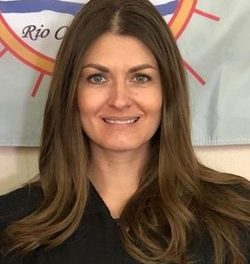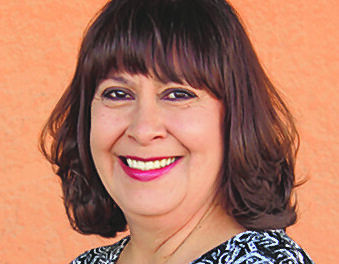It’s February. If you are an avid vegetable gardener, you’ve already bought your seeds and have hundreds of seedlings growing indoors for your cool season spring and warm season vegetables.
You may also have packets of seeds lovingly watched, harvested, cleaned and stored in preparation for this years’ planting. It can be said all gardeners are perpetual optimists.

Lynda Garvin
Every seed planted is an act of trust. If you are new to the art and science of vegetable gardening and haven’t done anything yet, don’t worry, there’s still time to get your ducks (or seeds) in a row.
Where to start, what do you and your family like to eat? Will it grow here? Does it germinate best in cool soil or does it need warm soil temperatures, like the heat loving chile and tomato?
If this seems overwhelming, start with a list of vegetables you’d like to eat and want to grow this year. Here comes the fun part, finding your seeds. Time to put on your detective hat and search the internet or local garden centers.
For best results and if you want to save seeds from the fruits of your labor, search for organic open-pollinated or heirloom varieties. All heirloom seeds are open pollinated. Hybrid seeds have been hand- or mechanically-cross pollinated, seeds saved from the first year fruits may not resemble the fruit they came from. If you like to experiment, that may not be an issue.
Now back to seed sleuthing. Using the seed catalogue online or paper copy, find the vegetables you want to plant. Read the plant description to find where they grow best. You can look up your hardiness zone by Zip Code at planthardiness.ars.usda.gov/PHZMWeb/Default.aspx.
The hardiness zone is an average of the first and last freeze dates for an area. For most of Valencia County that is 7a.
Another great resource is the NMSU Publication “CR457B Growing Zones, Recommended Crop Varieties, and Planting and Harvesting Information for Home Vegetable Gardens in New Mexico,” aces.nmsu.edu/pubs/_circulars/CR457B.pdf. It has a wonderful table showing when to start seeds indoors, the best time for transplanting or seeding outdoors, and harvest time for both spring, summer and fall vegetables.
Most of Valencia County is in Growing Area 2 with an average last frost from April 20 to May 10 and 150 to 180 growing days. You may want to try a few different varieties of the same vegetable or keep it simple by planting only one variety. Some plants easily cross pollinate, such as chile. All peppers from ghost to sweet bell are the same genus and species. That means if you plant them next to each other and they cross pollinate by a foraging bee, you can end up with a hot sweet pepper or a milder ghost pepper. Another reason to stick to one variety of each vegetable, until you have more experience and knowledge of vegetable gardening.
If you don’t have room, equipment or the desire to start seeds indoors this year, there are many cool season vegetables you can directly seed outside. These are commonly referred to as cool season vegetables. They like cool soil temperatures to germinate. They can also be planted in late summer for fall and early winter harvests.
You can plant spinach, leaf lettuce, onions, peas, carrots, kale, chard and collards now. In March, you can plant asparagus crowns, a perennial that keeps giving every year, lima, fava, and garbanzo beans, beets, radish, broccoli, cabbage, and turnips.
Fast and easy starter vegetables are leafy greens that can be planted in containers for easy care and harvesting. If you need more information on how to prepare your soil and planting, refer to “Home Vegetable Gardening in New Mexico,” aces.nmsu.edu/pubs/_circulars/CR457.pdf or contact the extension agent, [email protected].
Program announcements
• From 3-4 p.m. on the first and third Wednesday of the month, free live gardening classes with “Ready, Set, GROW!” Register at aces.nmsu.edu/desertblooms/ready-set-grow.html
Previous class recordings and resources can also be found at this site. If you want to learn about starting seeds indoors, see the video on Seed Starting from Feb. 3.
Our next class on Wednesday, Feb. 17, is Winter Weed Management, with Dr. Leslie Beck.
Designing Landscapes for Diversity, Wednesday, March 3, with Dr. Amanda Skidmore.
Pruning Basics, Wednesday, March 17, with Dr. Marisa Thompson.
The pruning workshop normally held in the spring at the Los Lunas Agriculture Science Center is cancelled due to COVID-19 restrictions.
(Lynda Garvin is the interim county program director and agriculture agent/extension master gardener coordinator for the Valencia County Cooperative Extension Service. New Mexico State University is an equal opportunity/affirmative action employer and education. NMSU and the US Department of Agriculture cooperating.)
















